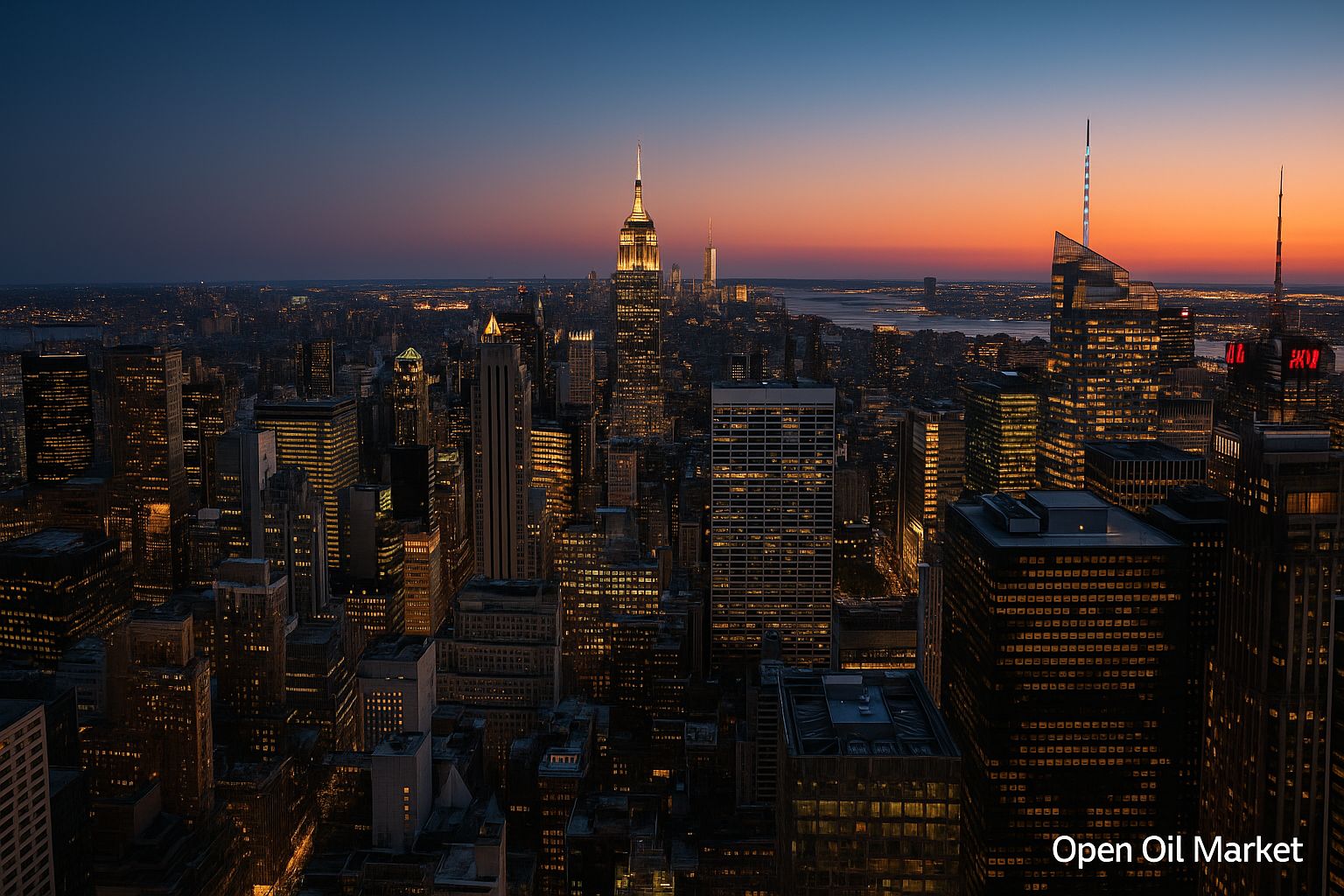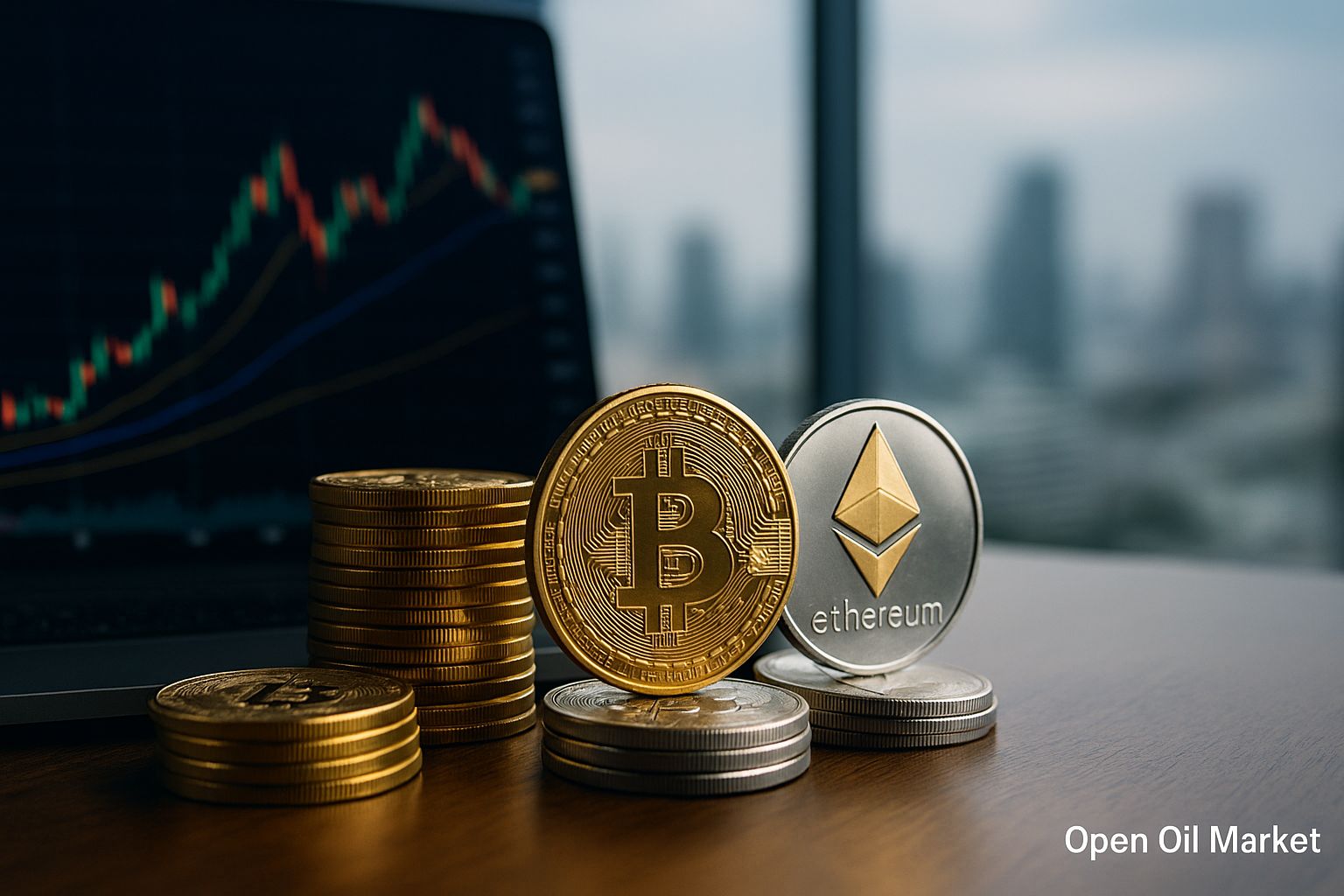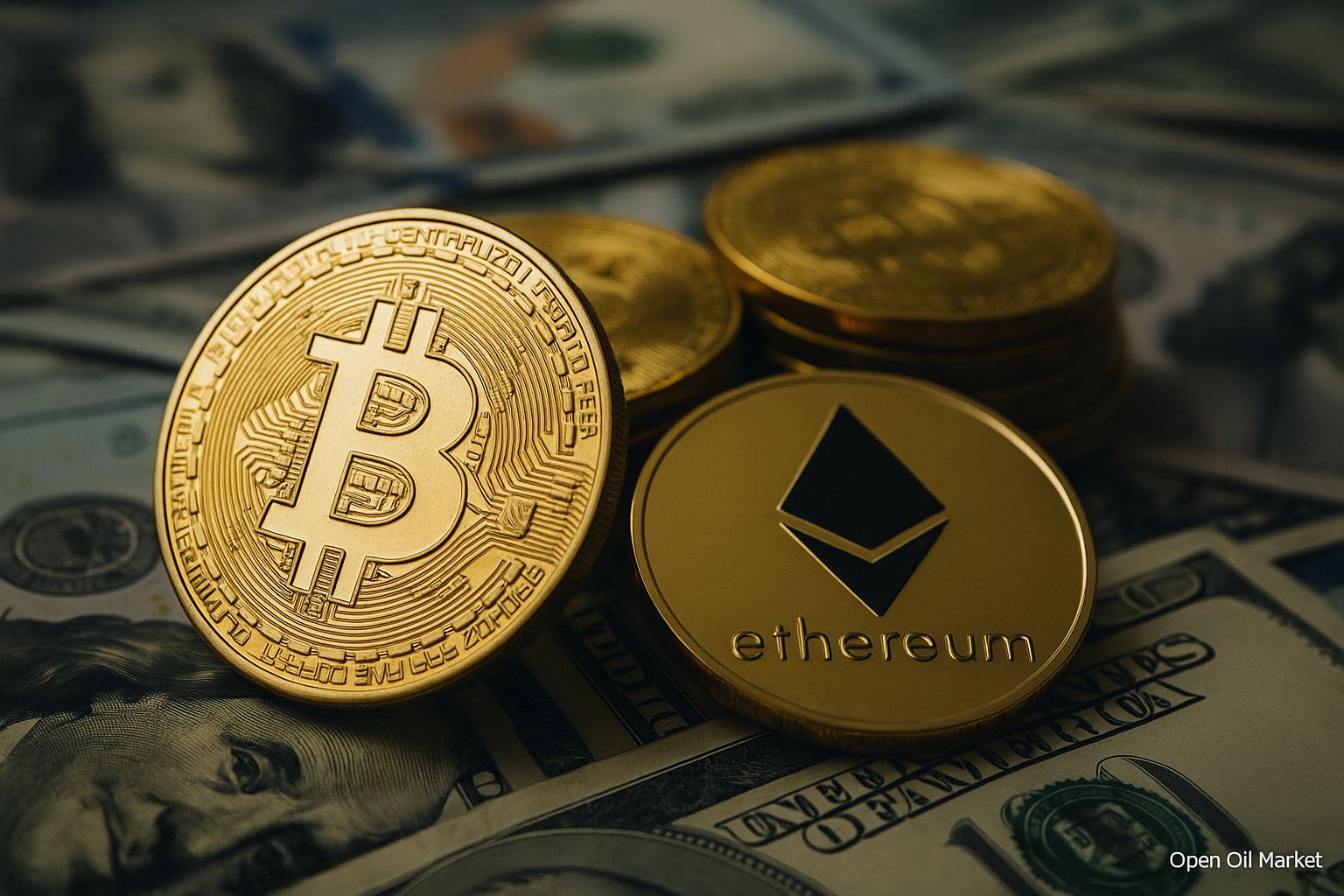
Current News on Startups and Venture Investments as of November 14, 2025: SoftBank's Bet on AI, Record Mega Rounds, IPO Wave, Market Consolidation, and Key Trends for Investors.
By mid-November 2025, the global venture market is showing a strong recovery following a downturn. Investors worldwide are once again actively financing technology startups—record deals are being made, and IPO plans for leading companies are back on the agenda. Major players are returning to the market with substantial investments, while governments continue to enhance support for innovation. As a result, private capital is increasingly flowing into the startup ecosystem with greater confidence.
The rise in venture activity is evident across all regions. The U.S. remains a leader (especially in the AI sector), while investment volumes have surged in the Middle East. In Europe, Germany is maintaining its lead in deal count ahead of the UK. India, Southeast Asia, and Gulf countries are attracting record amounts of capital amid a relative slowdown in activity in China. The startup ecosystems in Russia and the CIS are also striving to keep pace, despite external constraints. A global venture resurgence is forming at an early stage, with investors still acting selectively and cautiously, preferring high-quality business models.
Below are the key events and trends shaping the venture market as of November 14, 2025:
- The Return of Mega Funds and Major Investors. Leading venture funds are raising record amounts of capital and significantly increasing their investment activity, filling the market with liquidity and reigniting risk appetite.
- Record Rounds in AI and New Unicorns. Unprecedentedly large funding rounds are elevating startup valuations to new heights, especially in the artificial intelligence segment, facilitating the emergence of many new unicorns.
- Revival of the IPO Market. Successful debuts of tech companies on the stock exchange and new listings indicate that the long-awaited "window" for public exits has reopened.
- Diversification of Sector Focus. Venture investments are flowing not only into AI but also into a multitude of other sectors—fintech, biotech, climate technologies, defense projects, and even crypto startups.
- A Wave of Consolidation and M&A Deals. New significant mergers, acquisitions, and strategic partnerships are reshaping the industry landscape, creating opportunities for exits and accelerated growth for companies.
- Local Focus: Russia and the CIS. New funds and initiatives are being launched in the region to develop local startup ecosystems, attracting the attention of investors despite geopolitical constraints.
The Return of Mega Funds: Big Money Back in the Market
The largest investment players are triumphantly returning to the venture arena, demonstrating a renewed appetite for risk. The Japanese conglomerate SoftBank, experiencing a "renaissance" due to its focus on artificial intelligence, has reported a sharp profit increase and is ready to direct released resources into new projects. Its Vision Fund is once again securing billions for investments, while SoftBank is radically restructuring its portfolio— for example, selling all of its stake in Nvidia for $5.8 billion to focus on building its own AI empire.
Simultaneously, sovereign wealth funds from Gulf countries are increasing their presence by injecting vast sums into technology initiatives and developing government megaprojects, establishing powerful tech hubs in the Middle East. Dozens of new venture funds are emerging globally, attracting significant institutional capital into high-tech sectors. Major Silicon Valley firms are also sitting on record reserves of “dry powder”—hundreds of billions of dollars in uninvested capital—ready to be deployed as market confidence grows. The return of "big money" is infusing liquidity into the startup market, intensifying competition for the best deals and instilling optimism in the industry regarding further capital inflows.
Record Investments in AI and a New Wave of Unicorns
The artificial intelligence sector remains the main driver of the current venture upswing, showing record levels of funding. Investors are eager to take positions among AI leaders, directing colossal sums into the most promising projects. In recent months, several AI startups have secured unprecedented rounds: for instance, Anthropic raised around $13 billion, while xAI garnered approximately $10 billion, setting new market benchmarks. Another example is the startup Cursor, which attracted $2.3 billion at a valuation of nearly $30 billion, making it one of the most valuable AI startups globally. These deals, often oversubscribed with excess demand, highlight the excitement surrounding AI technologies.
Notably, funding is not limited to end-user AI applications but is also flowing into the critical infrastructure supporting them. Venture capital is directed towards the “shovels and picks” for the new era of AI—from chips and cloud platforms to data storage solutions. The total volume of venture investments in the AI sector is expected to exceed $120 billion in 2025, with more than half of all venture capital this year directed towards artificial intelligence projects. The current boom has spawned a wave of new unicorns—companies valued at over $1 billion. Although experts caution against the risk of overheating in the market, the investment appetite for AI startups remains unabated.
The IPO Market Awakens: A New Wave of Public Listings
The global IPO market is emerging from a prolonged lull and gaining momentum. In Asia, a new series of listings in Hong Kong has sparked activity: in recent weeks, several major technology companies have successfully gone public, collectively raising billions in investments. For example, a leading electronics company raised about $5 billion in its public offering, demonstrating that investors are again eager to actively participate in public listings in the region.
In North America and Europe, the situation is also improving. The number of IPOs in the U.S. has increased by over 60% in 2025 compared to the previous year. A number of highly valued startups have successfully debuted on the exchange: fintech unicorn Chime saw its stock rise by 30% on its first trading day, while design platform Figma raised about $1.2 billion upon going public, reaching a market cap of approximately $20 billion. New high-profile listings are on the horizon—expected candidates for IPO include payment giant Stripe and other global technology companies. Even the crypto industry is looking to capitalize on the window of opportunity: fintech company Circle conducted a successful summer IPO, while cryptocurrency exchange Bullish has filed for a listing with a target valuation of around $4 billion. The resurgence of activity in the IPO market is vital for the venture ecosystem: successful public exits allow investors to realize profits and reallocate capital into new startups.
Diversification of Investments: Beyond AI
In 2025, venture investments are covering an increasingly broad range of sectors and are no longer limited to artificial intelligence. After a downturn in previous years, fintech has come back to life: significant funding rounds are occurring both in the U.S. and Europe, as well as in emerging markets, fueling the growth of new digital financial services. At the same time, interest in climate and “green” technologies is rising: projects in renewable energy, eco-friendly materials, and agri-tech are attracting record investments amid a global trend of sustainable development.
Appetite for biotech has also returned: the emergence of breakthrough developments—such as a new obesity treatment—has attracted $600 million in a single round, indicating a renewed investor confidence in medical and biological innovations. Furthermore, increased attention to security and the geopolitical landscape has stimulated investments in defense technologies—startups in the defense and aerospace systems sectors are receiving funding once again. Even the cryptocurrency market has partially restored trust: blockchain startups and Web3 infrastructure companies have begun attracting capital again after a prolonged hiatus. This broadening of sector focus makes the startup ecosystem more resilient and mitigates the risks of overheating in individual segments.
Consolidation and M&A Deals: Scaling Up Players
High startup valuations and intense competition for markets are driving the industry toward consolidation. Major mergers and acquisitions are again taking center stage, reshaping the power dynamics within technology. Tech giants are ramping up strategic acquisitions, seeking to secure key innovations and talent. A notable example is Google’s agreement to acquire Israeli cloud startup Wiz for approximately $32 billion, setting a record for Israel’s tech sector. Such megadeals demonstrate the willingness of corporations to pay a premium for leadership in promising sectors.
Overall, the new wave of M&A and strategic investments indicates the maturation of the market. Mature startups are increasingly merging with one another or becoming targets for acquisition by larger players. For venture funds, this means long-awaited exit opportunities with profits. Consolidation enables companies to scale more rapidly and strengthen their market positions, while investors can realize returns on their investments after several years of waiting.
Russia and the CIS: Local Initiatives Amid Global Trends
Despite external constraints, there is a resurgence of startup activity in Russia and neighboring countries. In 2025, the Russian venture market emerged from a stagnant phase: investment volumes in the first half of the year nearly doubled compared to the previous year, although in absolute terms, it still lags behind global leaders. The announcement of new venture funds totaling over 10 billion rubles focused on supporting early-stage tech projects has been made. Local startups are beginning to attract serious capital: for example, the regional foodtech project Qummy raised about 440 million rubles at a valuation of around 2.4 billion rubles, indicating a willingness to invest in domestic initiatives.
There are signals for major companies in the region to consider entering the public market. Some corporations are contemplating the IPO of their technology divisions, anticipating an improvement in market conditions—holding VK publicly acknowledged the potential for listing shares of its IT business in the future. Additionally, authorities are taking steps to stimulate the sector: grant and accelerator programs are being expanded, and in some cases, restrictions for foreign investors are being eased, gradually rekindling foreign capital interest in local projects. All these initiatives aim to integrate the local startup ecosystem into global trends and attract more venture investments to the region.
Cautious Optimism and Quality Growth
By mid-November 2025, a moderately optimistic sentiment has strengthened in the venture market. Successful IPOs and multi-billion-dollar deals indicate that the long period of decline is behind us, yet investors still exercise caution. Funding is focused on startups with sustainable business models, proven economics, and profitability potential. Significant capital inflows into AI and other sectors instill confidence in continued market growth, but participants are keen to avoid repeating the mistakes of past “bubbles” by diversifying their portfolios and tightening project selection criteria.
Thus, the venture ecosystem is entering a new cycle of development that is more mature and balanced. The return of major investors and successful exits lay the groundwork for a new wave of innovation, but investor discipline and prudence will determine the nature of this growth. Despite increased risk appetite, the focus remains on the quality growth of startups and the long-term sustainability of the market.




